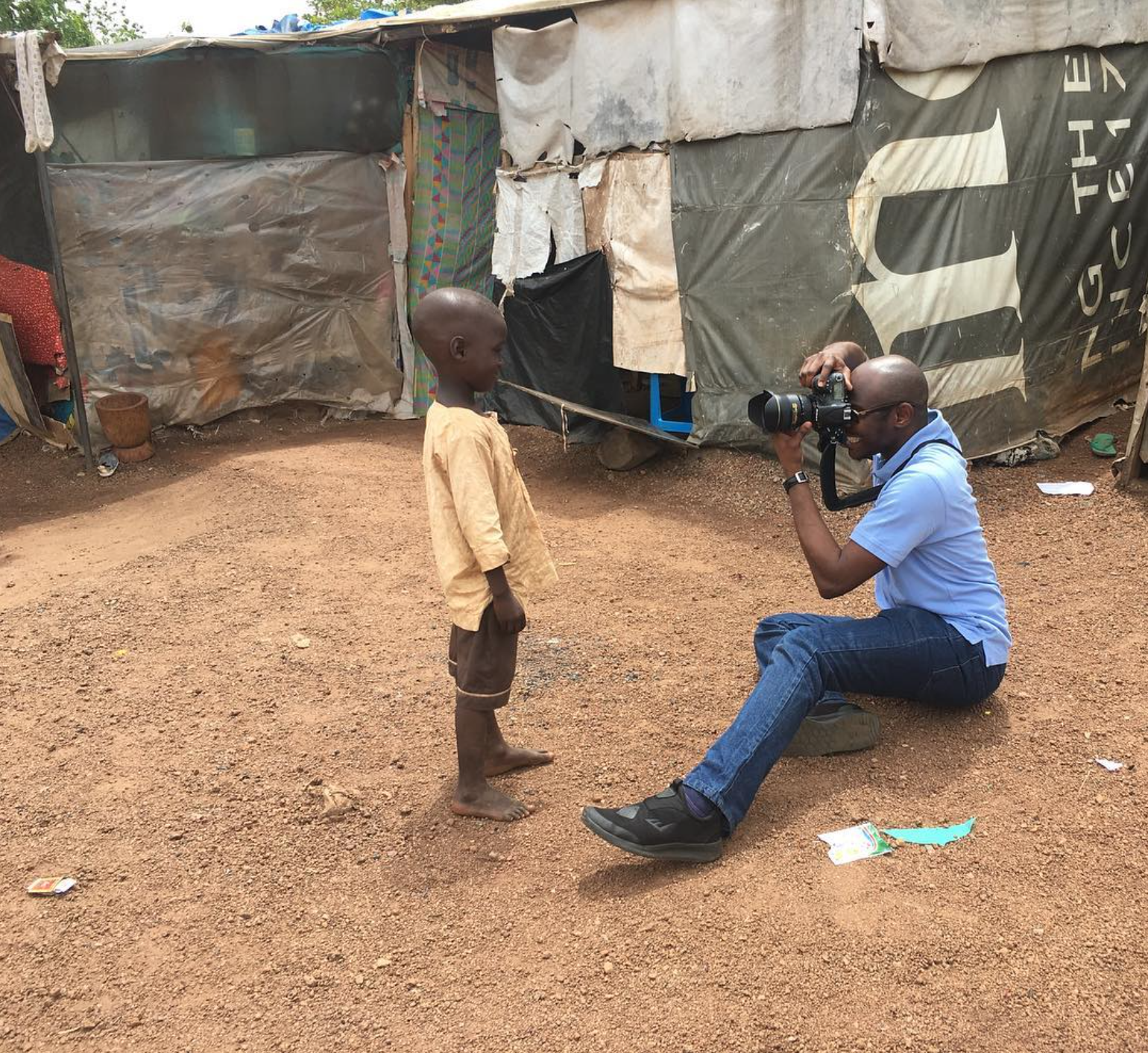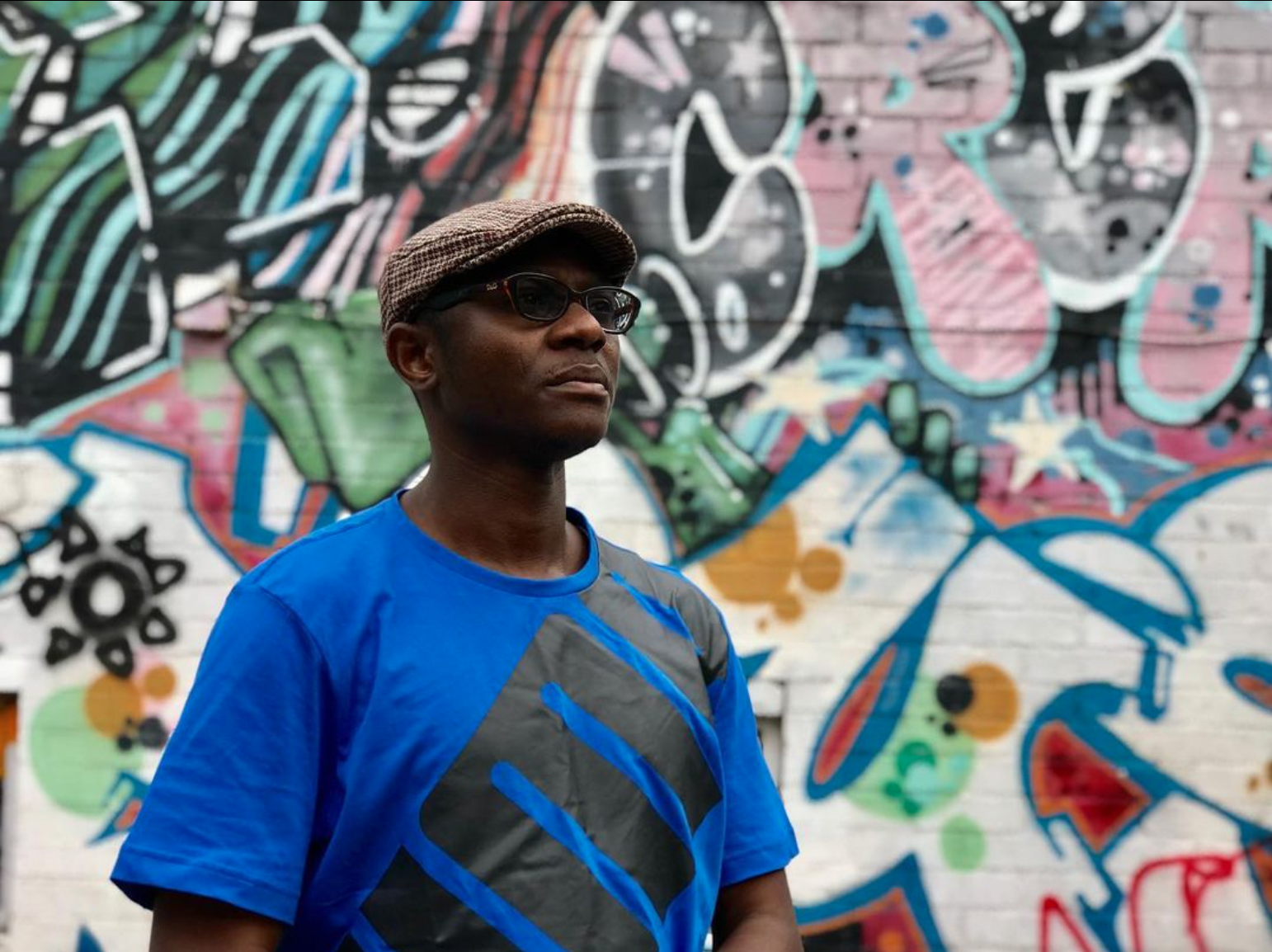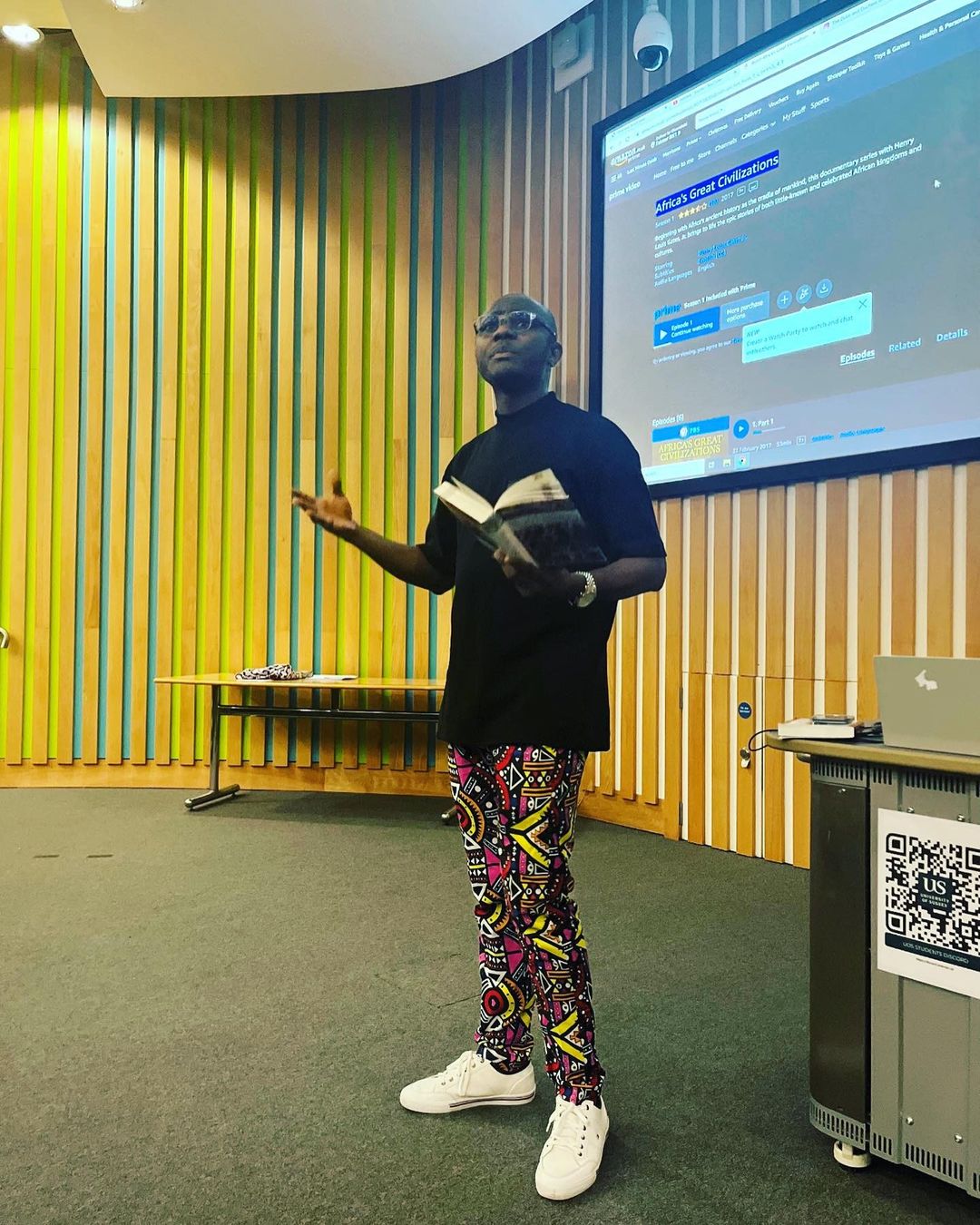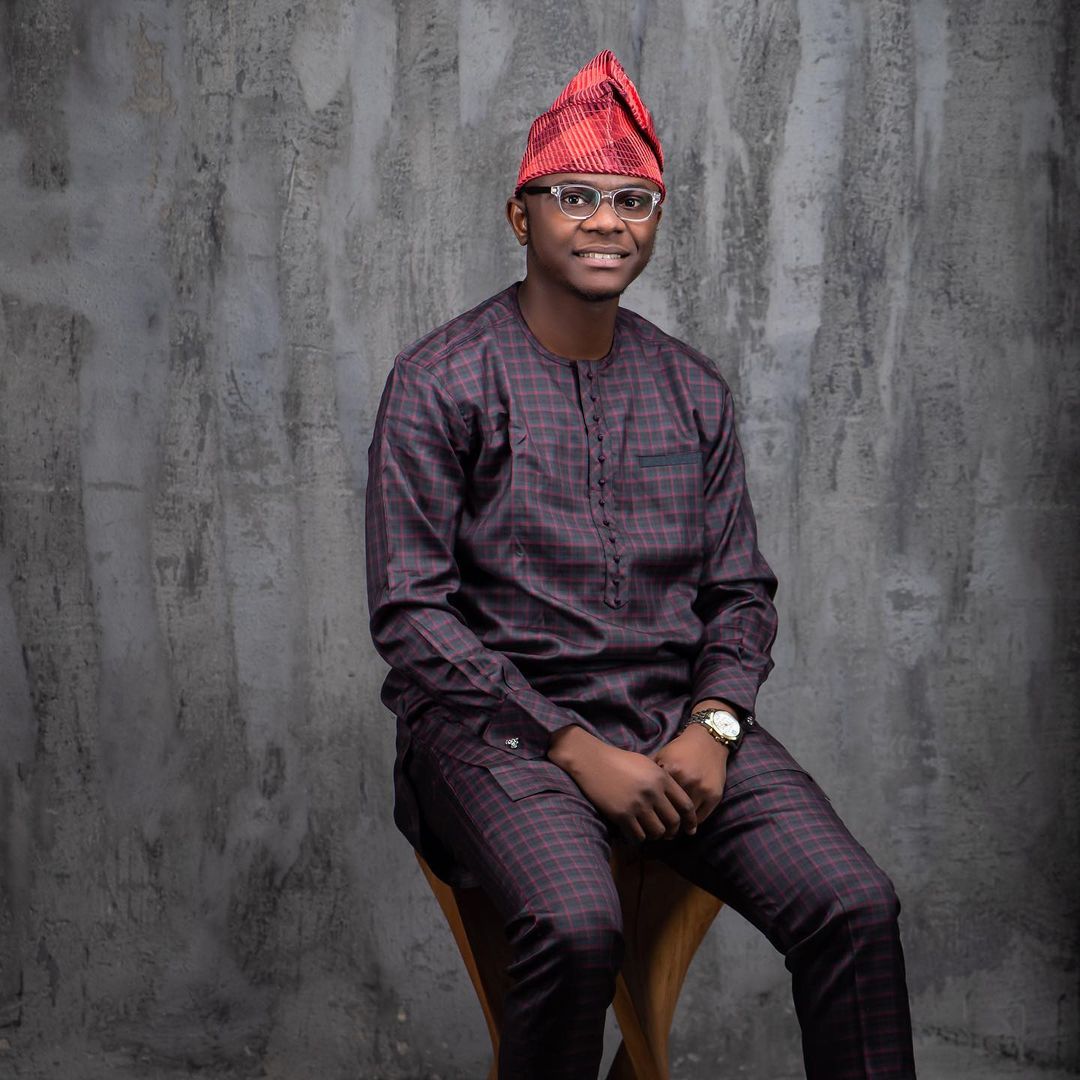Editor’s note:
I was taking a course in storytelling when I saw photos of Tunde Alabi-Hundeyin II, camera in hand, at the IDP camp. He was described as someone “who is showing the resilience and dignity of everyday life and giving people agency in their own story.” Tunde’s works stand in sharp contrast to the western media’s portrayal of pity, and I knew, immediately, that we needed to have him in this series. Here, Tunde Alabi-Hundeyin II tells us how we can tell the stories of everyday people from a place of strength and not weakness. There are so many ways to tell the African story, but it starts with knowing who we are. I learned a lot from Tunde. You will too.
***

Directed by Tunde Alabi-Hundeyin II, Towards Utopia tells the stories of Internally Displaced People living at the Durumi IDP camp in Area 1, Abuja. 15-year-old Suleiman bought his bike from the proceeds he made from his cashew business. The Alli family lost their patriarch to Boko Haram in Gwoza. Since then, Mrs Alli has taken care of her 3 nieces and her 3-year-old, Idris, who was born in the camp. Tunde has one purpose for making the short film, Towards Utopia: “what I found in the IDP camp were activity and resilience. Behind each face, there was a world of relationships, family, and friendships, it felt important to tell these stories.”
Towards Utopia is a sharp contrast to the kind of black body representation that Tunde watched of African children, growing up in the 1980s. In these documentaries, he only saw malnourished children with protruding bellies, Africans starving to death; their bones showing long stripes beneath their skin and Europeans giving aid.
There was a single story – infantilisation, dependency, barbarism, and commodification. There was a stereotype.
“In that film, I talked about how the black body is infantilised. It’s a mindset. It’s an ideology. It’s a mental framework the Western media industry works with. They have wired the minds of their people and us to believe that black people are unable to help themselves, and that white people are more clever. And, you know, one cannot advance beyond one’s level of reasoning or self-image.”
Tunde decided it was time to do something: “Yoruba people say that anger cannot light a cigarette. We all have to make an input for change.”
Then came Towards Utopia.

Tunde walked into a film studio for the first time at age 7. His father, Tunde Alabi-Hundeyin (Dudu) made music videos for Shina Peters, KWAM 1, Onyeka Onwenu, and Sonny Okosun and, in 1983, directed his first feature film – Ireke Onibudo, on celluloid. Tunde was born into the media/filmmaking industry and upon graduation from the university, he knew what he wanted to be: a visual storyteller.
Fresh from the National Youth Service Corp, he made his first independent short documentary film, Nigeria Rocks, for the World Summit on the Information Society (WSIS)/UNESCO Summit, Tunis 2005. In 2010, he made a foray into documentary photography. By 2015, he went into it full-time.
Since then, Tunde has focused on telling stories about African societies, cultures, and marginalised communities, with a focus on counteracting stereotyped narratives, highlighting humanity, resilience, dignity, and agencies.
Beyond his father’s influence, Tunde’s reason for being a storyteller is gotten from an African proverb: “until a lion learns to tell its own story, the story will always glorify the hunter.”

To create a single story, show a people as one thing, as only one thing, over and over again, and that is what they become – Chimamanda Ngozi Adichie.
Storytelling plays a pivotal role in the way people are perceived. “Storytelling is autobiographical.” Whoever chooses to tell the African story must do so understanding the African perspective, else it brings to question the objectivity of the story. When Westerners tell a story about us, they are telling it from their own perspective and worldview – mostly of Africa being a poverty-stricken continent.
Tunde tells me a story.
“I’ll give a very good example of my friend and photographer colleague, Nana Kofi Acquah. He worked with a Western writer on a story for New York Times a couple of years ago, while he was the photographer. It was about how Ghanaians were returning from the diaspora to establish farms and one of those farmers had a farm where they reared grasscutters. By the time the story was published, the writer, instead of presenting it as grasscutter that we eat, used the word ‘giant rat.’ In the mind of a New Yorker reading that story, the impression will be that people eat rats – domestic pests, rather than bushmeat – in Ghana. This is one of many examples of how stories are tilted and how they, in turn, present a single stereotyped story of an entire continent.”
Africa is experiencing tough times – there is poverty, corruption, poor leadership, bad roads, trigger-happy policemen, and so on. Still, it is important to mention that the continent has some of the most innovative and resilient people in the world. “Creating a balance in our storytelling has to do with us reporting the good and the bad. There are a lot of things that are working for the continent. We should also write about the triumphs.
It was when I visited Europe that the reality really dawned on me that homeless people sleep rough on the cold streets. Brighton, where I live has the second highest population of homeless people in England but you don’t ever see that in their films, documentaries, news, or pop culture. Western media is deliberate about the kind of stories they tell of themselves and their people. That’s why you will see people fighting over themselves to migrate to Europe – because of the picture-perfect landscapes they had seen on TV. They have consciously been told that the best place to live in the world is Europe and North America. The stark reality is presented to an average African who comes there and sees bad roads, homeless and jobless people on benefits. So our media has to make a conscious effort in presenting our society positively and by positive representation, I’m not advocating for a deodorised or whitewashed rhetoric. There has to be a euphemistic, fair and balanced narrative.”

Tunde says that when it comes to storytelling, every story is told from someone’s lens and perspective. There’s a camera, there are words, there’s an agenda – and there are people behind this. You just have to choose what you want to focus on.
“Every picture or film you see is somebody’s perspective. So, there has to be a conscious effort to create a balanced narrative. We can talk about beautiful cities and the trials of people in the face of debilitating circumstances. You can tell stories of people living in certain situations yet they are still thriving. We can talk about the resilience of people, change-makers, activists, and emerging opportunities on the continent. The scientific and technological inventions young people are spearheading here and there, stories of peaceful and supportive rival communities; it’s not all the time communities are up in arms against one another. These are stories that should be increasingly reported. Stories of our heroes, about people who have contributed to the development of the continent, political heroes, music talents and legendary works of people who have contributed to science, tech, good governance, manufacturing, fashion, music, culture, and tradition, also people thriving in the diaspora. These are positive stories that are begging to be reported.”
This is what it takes to tell our stories: nuance, control, self-representation, and objectivity; even though objectivity is a contestable and subjective term. That was what Tunde hoped to achieve with Towards Utopia.

When Tunde packed his bags and headed to the IDP camp to tell Towards Utopia, there was a lot of uncertainty and he didn’t know what to expect.
“I had never been to an IDP camp in my life and I had to draw a mind map of what to expect; the security situation and a lot of factors. When I got into the Durumi camp, I saw people like myself – people I could relate with. It wasn’t really much of a big deal at the end of the day. I spent about a month there, left for the UK, and then came back six months later to spend about two weeks photographing and filming them, and also giving the children cameras to visually represent their lived experiences. I had to work with the children on that participatory photography project as I believe no one can tell your story as much as you.
Many Western filmmakers arrive on the continent to tell a story only to return to Europe claiming to be experts about certain phenomena on the continent when they have only spent two weeks or even a month. Imagine your friend coming to live in your house for a week and they go back with claims to vast knowledge and experience about your family. What happens when someone travels from their continent to ours to make stories is that they probably only leave with one perspective of that experience, depending on who the tour guide is or who is bankrolling the project. The piper always dictates the tune.”
Here’s another way to tell African stories: work with the people whose stories are being told by immersing yourself into their lived experiences. “The legitimacy of mediation has to be earned by a conscious effort to empathise with, respect, and share the experiences of the subjects in our stories.”
Telling these stories does not come without challenges. For people like Tunde, their cameras are threats to security forces and street urchins.
“Another challenge of telling African stories in Africa are security agencies; soldiers, policemen, and uniformed officials. While we were shooting clips for a documentary on Eko Bridge in Lagos in 2005, area boys attacked us. They removed my pair of glasses and threw them into the lagoon. They collected our camera, and when we pleaded, they returned the camera but seized the tape.
When I wanted to take a panoramic shot of the National Arts Theatre, policemen extorted me. In Abuja, when I was taking an image of the City Gate, a soldier harassed and extorted me. It has happened several times – area boys, soldiers, and policemen are always attacking, harassing, or extorting.
My wife and her colleagues travelled from the UK to Rwanda recently for the Commonwealth Heads of Government Meeting (CHOGM) and as they were walking past the presidential building taking photos, a soldier came to ask them to delete the photos. What is the offence in taking a picture of the president’s mansion?
So, if we are to effectively tell African stories, it is expedient for central governments across the continent to make policies that will protect storytellers. We need to stop creating suspicions around camera-wielding people.”
But Tunde is not without success stories. People he doesn’t know want to be a part of his stories. He’s being commissioned to tell more African stories and make more documentaries. He’s learning a lot about African history on the job. “It gives me a high level of pride when people see my work and make positive comments about how it probably changed their perspectives or informed them.” He’s happy and fulfilled.

Here’s one more way to tell the African story: tell your own story. Write it. Pass it from generation to generation. Archive it into history.
“We need to write biographies and autobiographies. My dad will be seventy next year and I have been putting pressure on him to write his autobiography. Thankfully, he’s started. Africans need to tell their own stories by commissioning skilled writers to write their biographies. If you have immensely contributed to any sphere of the African experience, write your own story. Create a Wikipedia page or get people to help you with it. I had to do that deliberately two years ago, creating a Wikipedia page about my dad and a number of African photographers as well. I teach photography at the University of Sussex, and one of the tasks that I have been executing in the last couple of years is decolonising the curriculum to accommodate the invaluable contributions of Black, Asian and Minority Ethnic (BAME) storytellers to the industry. The world requires studying their body of work as well. Knowledge creation shouldn’t be solely north-centred, the global South has voices. Use books, web pages, and even family histories – a lot of families need to sit down and draw their own family trees and histories.
We also have legends whose stories need to be told – Fela Anikulapo Kuti, King Sunny Ade, Mariam Makeba, Haile Selassie, Kwame Nkuruma and many others. We are yet to unearth the histories of our indigenous music genres across the diverse African landscape. There are loads of stories to be told…”
…and we need a lot of storytellers to tell these stories. That is where you come in. You get to tell the African story.
“Everyone should tell it. Africans should be empowered to be able to tell their stories. We should have vital skills by enrolling in school to learn how to create compelling stories. And then outsiders who come to write our stories should learn to let go of the silent biases that they already have about us and to respect our culture, humanity, and values.”
Tell your children folklore. Bring out family photos and tell them stories about the activities that were happening in those photos. We shouldn’t just preserve our stories through oral means alone. We should also learn to document. I hope this generation will get this right.”

Tunde is working on something special. At the risk of spilling the beans, I’ll tell you that it’s a documentary. Two, it will be a story about the triumphs of people who have experienced terrorism in Nigeria. Three, it’s a huge one and, four… watch out for it!
***
All photos are from Tunde Hundeyin/Instagram
Many thanks to Tunde for having this conversation with me. Did you miss the previous episodes? Go ahead and read them here.
The post How Should We Tell The African Story? – A Conversation with Tunde Alabi-Hundeyin II appeared first on BellaNaija – Showcasing Africa to the world. Read today!.
Source: BellaNaija


